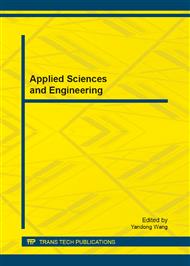p.686
p.691
p.696
p.703
p.707
p.712
p.717
p.722
p.727
Experiment of CRMP on Oil Palm Empty Fruit Bunch Biomass Utilization
Abstract:
In this paper, we focus on the possibility for Oil Palm Empty Fruit Bunch (OPEFB) Biomass Utilization by experimenting with chemi-refiner mechanical pulping (CRMP). To understand the process of CRMP, a short description of five comparable experiments and effects of refiner plate dam on coarse pulp properties is given. Plate dams offer a chance to utilize different alternatives needed to defibrate OPEFB and develop fiber in a more efficient way. From the experimental results, we also assume the possibility of a refining mechanism of defibration by friction of fiber to fiber interaction occurring mainly at the primary stage high consistency refining; the second stage is for fiber properties development by fibrillation at medium consistency. The effect of the undammed refiner plates is cutting more than fibrillation at high consistency, and fibrillation more than cutting at mid-consistency; The effect of the dammed plates is more friction than cutting at high consistency and more fiber fracture at medium consistency.
Info:
Periodical:
Pages:
707-711
Citation:
Online since:
September 2012
Authors:
Price:
Сopyright:
© 2012 Trans Tech Publications Ltd. All Rights Reserved
Share:
Citation:


